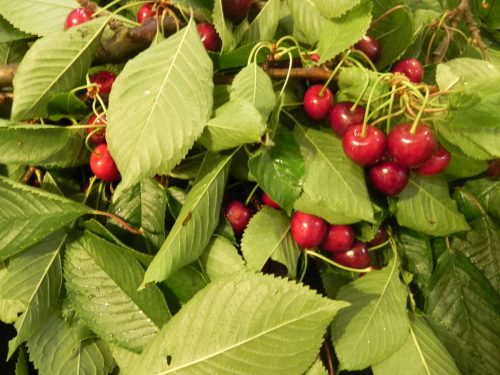Cherry trees can be divided into sweet and sour cherry trees.
You are viewing the mobile-adapted version of the page.
The one for tablets, laptop and desktop also provides general information, such as origin and cultivation.
Cherry tree, divided into sweet cherries (Prunus avium) and sour cherries (Prunus cerasus) .
Cherry trees are grafted on a rootstock and grown as low stem, half stem and tall stem.
Cherry trees prefer full sun, in the south. This warm location is important for the formation of blossoms and later fruits. The sour cherry tree (Prunus cerasus) grows 7 to 8 meters high and the sweet cherry tree (Prunus avium) 20 meters.
Sweet cherries thrive best in moist, light clay soil. It is better not to fertilize sweet cherries the first few years after planting to avoid diseases and gummosis. After this period, fertilize in April and June.
Sour cherries are less demanding on soil, if it is not too heavy or too wet. Fertilize the sour cherry with farmyard manure in April and June.
Plums, cherries, peaches and apricots are stone fruits (drupes). These trees are best pruned from mid-April to mid-September. In practice this means that stone fruit trees can be pruned just after flowering in April/May or just after picking in August. Because the trees are still growing, pruning wounds heal faster and diseases and fungi are prevented.
Bugs
Leaf shows holes, warty spots on cherries: Common green capsid (Lygocoris pabulinus).
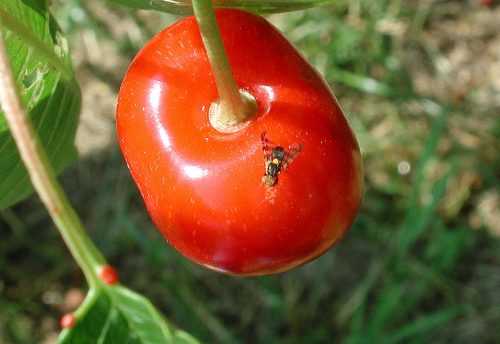
Affected cherry (rotten spots): Cherry fruit fly (Rhagoletis cerasi).
Ripening cherries develop soft spots that start to rot: Spotted wing drosophila (SWD) (Drosophila suzukii).
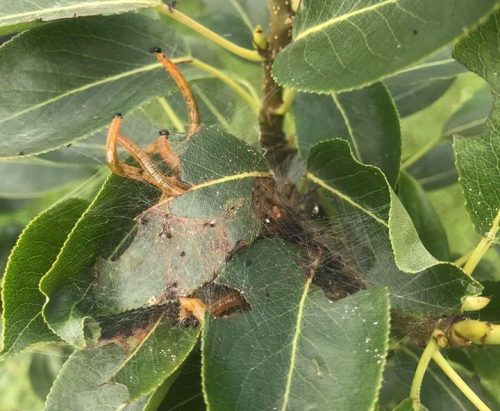
Spiders with orange caterpillars between the leaves: larvae of the Little Ermine (Swammerdamia pyrella), an ermine moth.
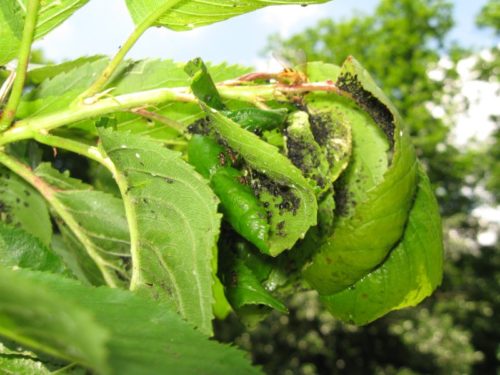
Leaf is covered with black aphids, deforms, curls and lags in growth: Black Cherry Aphid (Myzus cerasi).
Late June, early July brownish spins of + 10 cm appear between the leaves. Faeces remains hang in the fabric, dark yellow caterpillars crawl around: larvae of the Social Pear Sawfly (Neurotoma saltuum).
Fungi & diseases
Reddish spots on leaf discolor to brown, leaf tissue dies; holes fall in leaf: Shot hole disease (Stigmina carpophila).
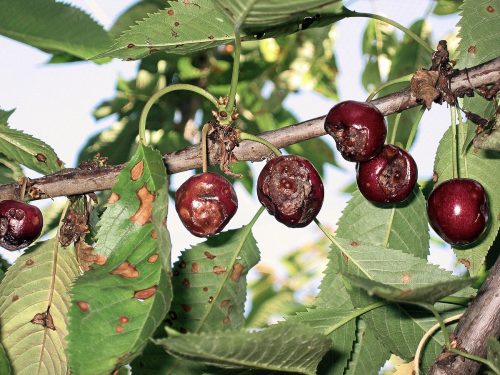
Browning affected cherries and fallen fruit with fungal spores: Brown rot (Monilinia spp.).
Leaves take on a silvery sheen: silver leaf (Chondrostereum purpureum).
Leaf early falls off, brown gum appears on dead bark: Bacterial canker (Pseudomonas syringae).
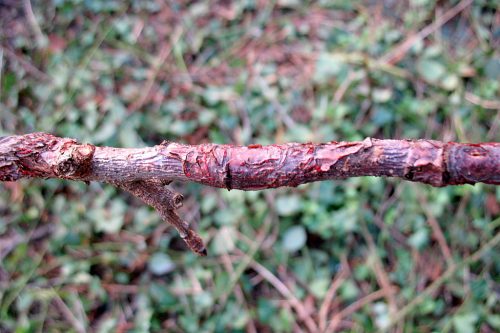
Bark tears, branch withers and red fungal fluff appears: Apple canker (Neonectria ditissima).
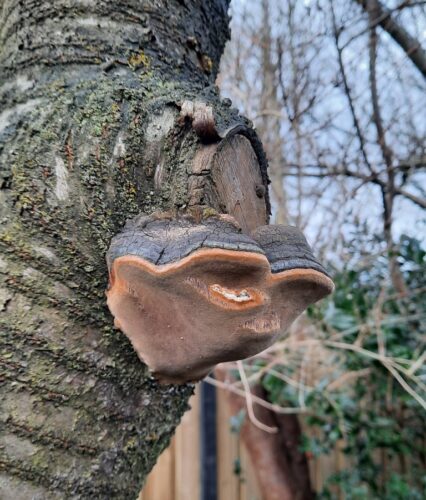
Red-brown, pillow-shaped fungi develop on the trunk: Cushion bracket (Phellinus tuberculosus).
Other
Nearly ripe cherries are pecked away: birds (starlings).
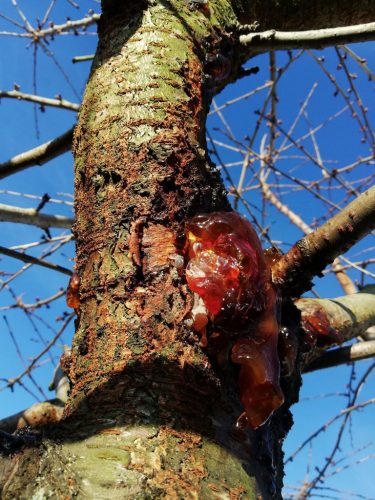
In several places on branches and trunk, the tree leaks moisture, which dries into brown gum: gummosis.
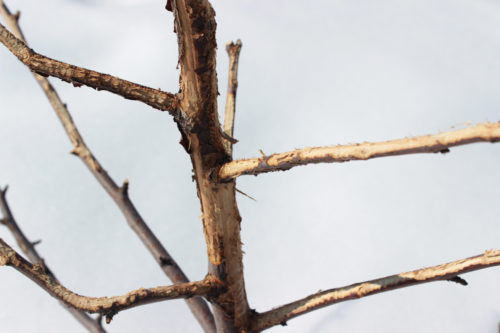
In winter, hares, rabbits and deer sometimes like to gnaw on the branches and trunk of the cherry tree.
Vertical cracks in the bark of the trunk: Bark cracks.

There are thickenings on the petioles. These are nectaries located outside the flowers. These extrafloral nectaries occur on bracts, supporting leaves, petioles and leaves. These nectaries attract wasps and ants that protect the plant from pests. The honey from these nectaries is of lower quality than that of the nectaries inside a flower. Extrafloral nectaries
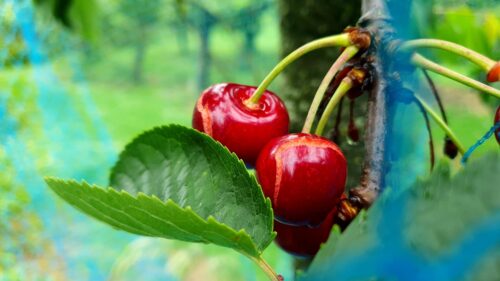
Abundant rain after a period of drought caused the nearly ripe cherries to burst. To prevent this, cherry trees are sometimes placed under a canopy.

